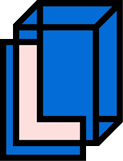A Problem Well-Stated is Half-Solved
What Defines an Effective Query?

A Problem Well-Stated is Half-Solved
What Define An Effective Query?
In this post, you will be able to find more about techniques used to define (and question) the problem in the early phases of the creative process.
Most design projects start with a problem, such as improving a product, creating an interactive checkout button or illustrating an idea.
Designers and clients alike often think about problems too narrowly at the outset, limiting the success of the outcome.
A client who claims to need new brochure may do better with a website, a promotional event, or a marketing plan.
A designer who thinks the client needs a new logotype may find that a pictorial icon or a new name will work better for a global audience.
A search for a greener packaging may yield not just individual products but new systems for manufacturing and distribution.
I have encounter the suitable idea at the opposite side of the obvious numerous times. At the beginning of design process, ideas are cheap and plentiful, pumped out in abundance and tossed around with abandon.
Later, this larger pool of ideas is narrowed down to those most likely to succeed. It takes time to visualise and test each viable concept.
Thus, designers often begin with a period of playful, open-ended study. It’s a process that includes writing lists as well as sketching images. It involves mapping familiar territory as well as charting the unknown.
Methods such as brainstorming and mind mapping help me generate core concepts, while others such interviewing, focus group, and brand mapping seeks to illustrate the problem by asking what users want or what has been done before. Many of these techniques could take place at any phase of a project.
Most thinking methods involve externalizing ideas, setting them down in a form that can be seen and compared, sorted, and combined, ranked and shared.
Thinking doesn’t happen just inside the brain. It occurs as fleeting ideas become tangible things like words, sketches, prototypes, and proposals.
